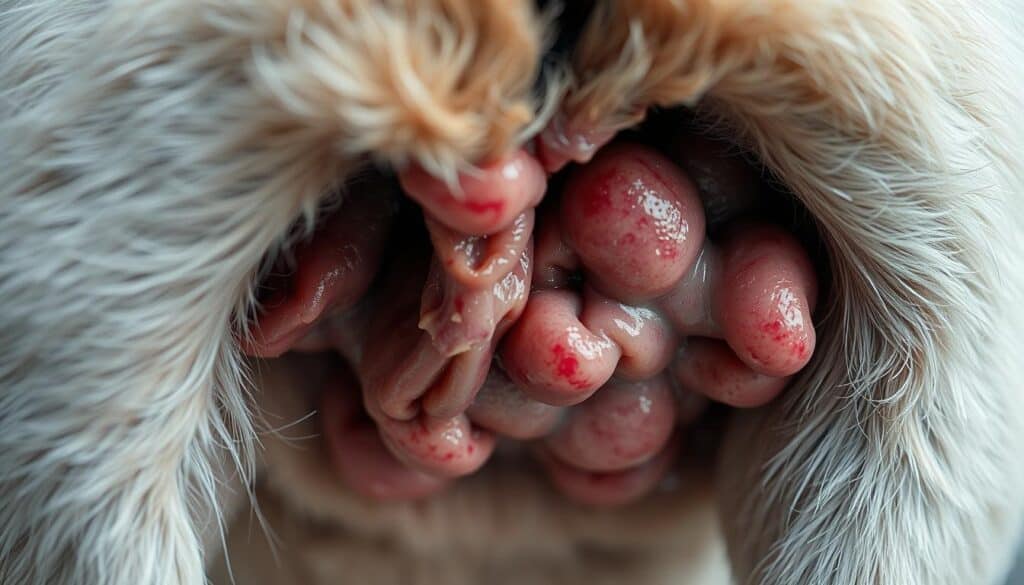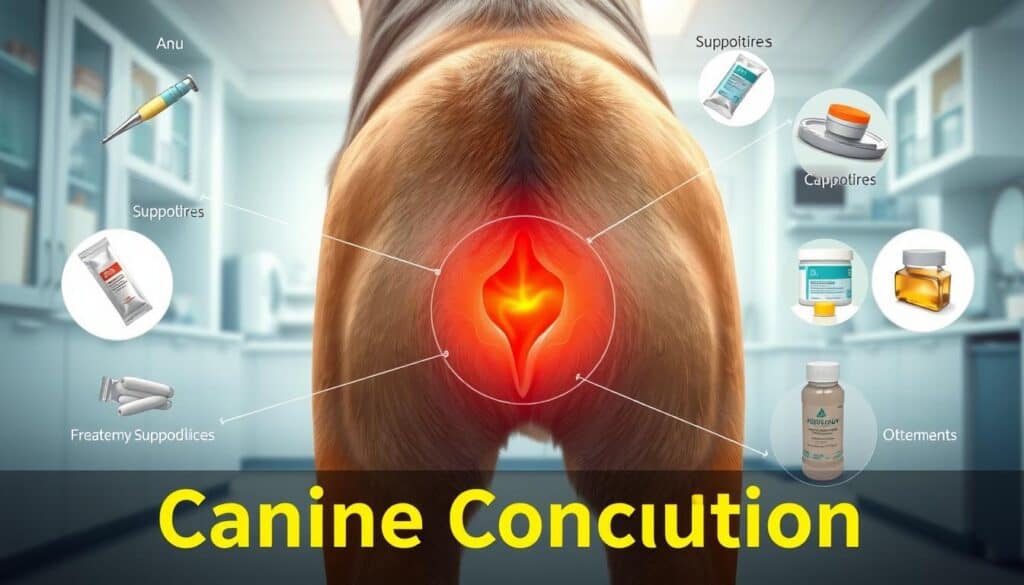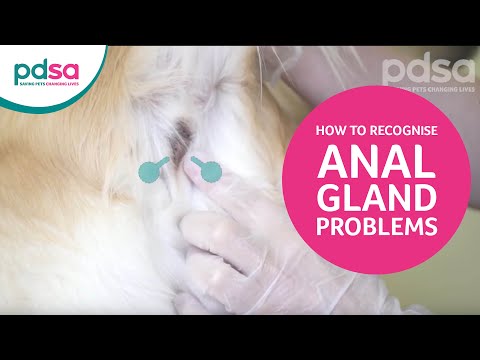As a dog owner, you’ve likely wondered about various health issues that can affect your furry friend. One question that might have crossed your mind is whether dogs can suffer from hemorrhoids. It’s a valid concern, given that hemorrhoids can cause discomfort and pain in humans. But can our canine companions experience similar anal health issues?
The short answer is that while the term “hemorrhoids” is typically used to describe a human condition, dogs can experience similar anal health issues. These issues might stem from various factors, including diet, genetics, and overall health. Understanding the causes and symptoms is crucial for providing your dog with the care they need.
Key Takeaways
- Dogs can experience anal health issues similar to hemorrhoids in humans.
- Diet, genetics, and overall health can contribute to these issues.
- Recognizing symptoms is key to providing proper care.
- Consulting a veterinarian is essential for diagnosis and treatment.
- Maintaining a healthy lifestyle can help prevent anal health issues.
Understanding Canine Anal Health
Understanding the intricacies of canine anal health can help dog owners identify potential issues before they become severe. A dog’s anal region is complex and plays a vital role in their overall health and comfort.
Normal Canine Anal Anatomy
The anal anatomy of dogs includes the anal sphincter muscles, anal glands, and the rectum. The anal glands, also known as anal sacs, are small sacs located on either side of the anus, which can sometimes become impacted or infected.
Normal anal anatomy is crucial for the proper functioning of a dog’s digestive system and for maintaining the dog’s comfort.
Common Anal Issues in Dogs
Dogs can suffer from various anal health issues, including anal gland impaction, anal fissures, and rectal prolapse. These conditions can cause significant discomfort and, if left untreated, can lead to more serious health issues.
| Condition | Description | Symptoms |
|---|---|---|
| Anal Gland Impaction | When the anal glands become clogged. | Scooting, licking, and discomfort. |
| Anal Fissures | Small tears in the anal mucosa. | Pain during defecation, bleeding. |
| Rectal Prolapse | Protrusion of the rectal tissue. | Visible protrusion, straining during defecation. |
Understanding these common issues can help dog owners recognize the signs early and seek veterinary care, potentially preventing more severe problems.
Do Dogs Get Hemorrhoids? The Surprising Truth
While it’s common for dog owners to worry about their pets developing hemorrhoids, the truth behind this condition in canines is often misunderstood. Hemorrhoids, a condition that affects humans significantly, are not as prevalent in dogs as one might think.
The Technical Answer
Technically, dogs do not get hemorrhoids in the same way humans do. The anatomy of a dog’s rectum and anus is different from that of humans, making the occurrence of hemorrhoids highly unlikely.
What’s Actually Happening
Instead of hemorrhoids, dogs often suffer from conditions that mimic the symptoms of hemorrhoids, such as anal gland issues or rectal prolapse. These conditions can cause discomfort, pain, and bleeding, leading to confusion about whether the dog has hemorrhoids.
Misconceptions About Canine Hemorrhoids
A common misconception is that dogs can develop hemorrhoids just like humans. However, the reality is that dogs are more likely to experience other anal and rectal issues. Understanding these differences is crucial for proper diagnosis and treatment.
| Condition | Symptoms | Treatment |
|---|---|---|
| Anal Gland Issues | Pain, swelling, discharge | Antibiotics, drainage |
| Rectal Prolapse | Bleeding, prolapsed tissue | Surgery, supportive care |
Conditions That Mimic Hemorrhoids in Dogs
Dogs can suffer from various anal and rectal issues that are often mistaken for hemorrhoids. Understanding these conditions is crucial for dog owners to provide the best care for their pets.
Anal Sac Disease
Anal sac disease is a common issue in dogs, causing discomfort and potentially leading to more serious complications if left untreated. Symptoms include scooting, licking, and pain around the anal area.
- Impaction
- Infection
- Abscessation
Regular checks and proper hygiene can help prevent anal sac disease.
Rectal Prolapse
A rectal prolapse occurs when the rectal tissue protrudes from the anus. This condition can be caused by straining during defecation, diarrhea, or other factors. Prompt veterinary attention is necessary to address a rectal prolapse.
Perianal Tumors
Perianal tumors, also known as perianal adenomas, are growths that occur around the anus. While often benign, they can cause discomfort and may require surgical removal. Risk factors include age and certain breeds.
Perineal Hernias
Perineal hernias occur when tissue bulges through a weakened area in the pelvic diaphragm. This condition can cause significant discomfort and requires veterinary care. Treatment often involves surgery to repair the hernia.
Recognizing these conditions is key to ensuring your dog receives the appropriate care. If you suspect your dog is experiencing any of these issues, consult with a veterinarian for a proper diagnosis and treatment plan.
Why Do Dogs Get Hemorrhoid-Like Conditions?
The occurrence of hemorrhoid-like conditions in dogs can be attributed to several factors. While dogs do not technically get hemorrhoids like humans do, certain conditions can cause similar symptoms.
Genetic Factors
Some breeds are more prone to certain health issues due to their genetic makeup. For instance, brachycephalic breeds (those with shorter noses and flat faces) can experience more strain on their rectal and anal areas due to their anatomy.
Environmental Causes
Environmental factors, such as diet and lifestyle, play a significant role. A diet low in fiber can lead to constipation, which in turn can cause straining during defecation, potentially leading to conditions that resemble hemorrhoids.
Health-Related Triggers
Underlying health issues, such as anal gland problems or rectal prolapse, can also contribute to the development of hemorrhoid-like symptoms. Regular veterinary check-ups are crucial to identify and manage these conditions early.
Understanding these factors can help dog owners take preventive measures and seek timely veterinary care if they notice any unusual signs or symptoms in their pets.
How Do Dogs Get Hemorrhoids or Similar Conditions?
Several factors contribute to the likelihood of dogs developing hemorrhoids or related conditions. Understanding these factors is crucial for dog owners to provide the best possible care for their pets.
Dietary Factors
A dog’s diet plays a significant role in their overall health, including the health of their anal region. A diet lacking in essential fiber can lead to constipation, which is a significant risk factor for developing hemorrhoids or similar conditions. Foods that are high in fiber, such as certain vegetables and whole grains, can help maintain healthy bowel movements.
Age-Related Issues
As dogs age, their risk for various health issues, including anal and rectal problems, can increase. Older dogs may experience weakened muscles around the anus, making them more susceptible to conditions like rectal prolapse.
Breed Predispositions
Some breeds are more prone to certain health issues due to their anatomy or genetic predispositions. For instance, breeds with a brachycephalic (short-nosed) skull structure may experience more respiratory issues, which can indirectly affect their overall health, including their susceptibility to certain anal and rectal conditions.
Lifestyle Contributions
A dog’s lifestyle, including their level of exercise and overall activity, can significantly impact their health. Dogs that are overweight or lead sedentary lifestyles are at a higher risk for various health problems, including those affecting the anal and rectal area.
By understanding these factors, dog owners can take proactive steps to minimize the risk of their pets developing hemorrhoids or similar conditions.
Recognizing Symptoms of Anal Problems in Dogs

Recognizing the signs of anal issues in dogs is crucial for their health and well-being. Dog owners should be vigilant about changes in their pet’s behavior or physical condition that could indicate anal problems.
Visible Signs to Watch For
Visible signs of anal problems in dogs can include swelling, redness, or discharge around the anus. In some cases, a dog may exhibit straining during defecation or show signs of pain while passing stools.
Behavioral Changes
Dogs with anal issues may display behavioral changes such as excessive licking or biting at the anal area, scooting or dragging their rear end on the ground, or showing reluctance to sit or move.
Do Dogs Get Hemorrhoids That Bleed?
While dogs do not get hemorrhoids in the same way humans do, they can experience conditions that mimic hemorrhoid symptoms, including bleeding. If a dog is experiencing rectal bleeding, it’s essential to consult a veterinarian to determine the underlying cause.
Distinguishing Between Different Anal Conditions
Distinguishing between various anal conditions in dogs requires a thorough veterinary examination. Owners should monitor their dog’s symptoms closely and report any changes to their veterinarian to aid in diagnosis.
By being aware of the signs and symptoms of anal problems, dog owners can help ensure their pets receive the necessary care and treatment.
Diagnosing Anal and Rectal Issues in Dogs
When it comes to identifying anal and rectal problems in dogs, a visit to the veterinarian is crucial. Pet owners should be vigilant about changes in their dog’s behavior or physical condition that could indicate anal or rectal issues.
When to Contact Your Veterinarian
If your dog is showing signs of discomfort, such as scooting, licking, or biting at the anal area, it’s essential to contact your veterinarian. Other symptoms that warrant a vet visit include visible swelling, discharge, or bleeding.
What to Expect During Examination
During the examination, your veterinarian will perform a physical check, which may include a rectal examination to assess the anal glands and surrounding tissues. The vet may also ask questions about your dog’s diet, bowel movements, and overall health.
Diagnostic Tests and Procedures
Depending on the initial findings, your veterinarian may recommend further diagnostic tests, such as:
- Blood tests to check for infections or inflammation
- Imaging studies (e.g., X-rays, ultrasound) to visualize the anal and rectal area
- Biopsy to examine tissue samples for abnormalities
| Diagnostic Test | Purpose |
|---|---|
| Blood Tests | Check for infections or inflammation |
| Imaging Studies | Visualize the anal and rectal area |
| Biopsy | Examine tissue samples for abnormalities |
Early diagnosis is key to effectively managing anal and rectal issues in dogs. By understanding the diagnostic process, pet owners can better support their pets through what can be a challenging experience.
“Accurate diagnosis is the first step towards effective treatment of anal and rectal problems in dogs.” – Veterinary Expert
Step-by-Step Treatment Guide for Canine Anal Conditions

Treating canine anal conditions requires a comprehensive approach that involves both veterinary care and at-home management. Dog owners can help their pets recover by following a structured treatment plan.
Veterinary Treatments
Veterinary treatments play a crucial role in managing canine anal conditions. These treatments are designed to address the underlying causes of the condition and provide relief to the dog.
Medications and Their Application
Medications such as anti-inflammatory drugs and antibiotics are commonly prescribed to treat anal conditions in dogs. The application of these medications can vary, with some being administered orally and others topically.
- Anti-inflammatory drugs: Reduce swelling and discomfort.
- Antibiotics: Treat bacterial infections that may be present.
Surgical Interventions
In some cases, surgical intervention may be necessary to treat canine anal conditions. Procedures such as anal sacculectomy or rectal prolapse repair can provide significant relief.
At-Home Care Steps
At-home care is essential for managing canine anal conditions effectively. By implementing simple care steps, dog owners can help their pets recover and prevent future issues.
Dietary Adjustments
Dietary adjustments can play a significant role in managing anal conditions in dogs. Feeding a balanced diet that is rich in fiber can help regulate bowel movements and reduce strain during defecation.
“A well-balanced diet is crucial for maintaining healthy digestion and preventing anal conditions in dogs.”
Comfort Measures
Providing comfort measures can help alleviate the discomfort associated with canine anal conditions. This can include providing a comfortable place to rest and minimizing activities that exacerbate the condition.
Cleaning and Hygiene Practices
Maintaining good hygiene is crucial for preventing infection and promoting healing. Gentle cleaning of the anal area with appropriate products can help keep the area clean and reduce the risk of complications.
- Clean the anal area gently.
- Use appropriate cleaning products.
- Monitor for signs of infection.
By following this step-by-step treatment guide, dog owners can help their pets manage canine anal conditions effectively and improve their quality of life.
Preventing Anal and Rectal Problems in Dogs
By understanding the causes of anal and rectal problems, you can take steps to prevent them in your dog. While dogs rarely get hemorrhoids, other conditions can affect their anal and rectal health.
Optimal Diet for Anal Health
A well-balanced diet plays a crucial role in maintaining your dog’s anal health. A diet rich in fiber can help prevent constipation, reducing the risk of anal and rectal problems. Foods high in fiber include:
- Vegetables like carrots and green beans
- Fruits such as apples and blueberries
- Whole grains like brown rice and oats
Adequate hydration is also essential, as it helps prevent constipation and maintains healthy bowel movements.
Exercise and Weight Management
Regular exercise and maintaining a healthy weight are vital for preventing anal and rectal issues in dogs. Exercise can help stimulate bowel movements and improve overall health.
Regular Health Checks
Regular veterinary check-ups can help identify potential issues before they become severe. Your veterinarian can provide guidance on maintaining your dog’s anal and rectal health.
Anal Gland Maintenance
Some dogs may require anal gland expression to prevent impaction or infection. Your veterinarian can demonstrate how to perform this procedure or do it for you.
| Prevention Tips | Benefits |
|---|---|
| High-fiber diet | Reduces constipation risk |
| Regular exercise | Stimulates bowel movements |
| Regular health checks | Early detection of potential issues |
| Anal gland maintenance | Prevents impaction and infection |
By following these prevention tips, you can significantly reduce the risk of anal and rectal problems in your dog.
Conclusion: Keeping Your Dog’s Hindquarters Healthy
Understanding whether dogs can get hemorrhoids is crucial for maintaining their overall health. While dogs do not get hemorrhoids in the same way humans do, they can experience similar anal and rectal issues. Conditions like anal sac disease, rectal prolapse, and perianal tumors can cause discomfort and health complications.
The question of “do dogs get hemorrhoids” often stems from observing symptoms like swelling, pain, or bleeding around the anal area. “Why do dogs get hemorrhoids” is a common query, but it’s based on a misconception. Instead, dogs suffer from various anal and rectal conditions that require proper veterinary care.
By recognizing symptoms early, providing a balanced diet, ensuring regular exercise, and maintaining routine veterinary check-ups, dog owners can significantly reduce the risk of these issues. Keeping your dog’s hindquarters healthy is a vital part of their overall well-being.




